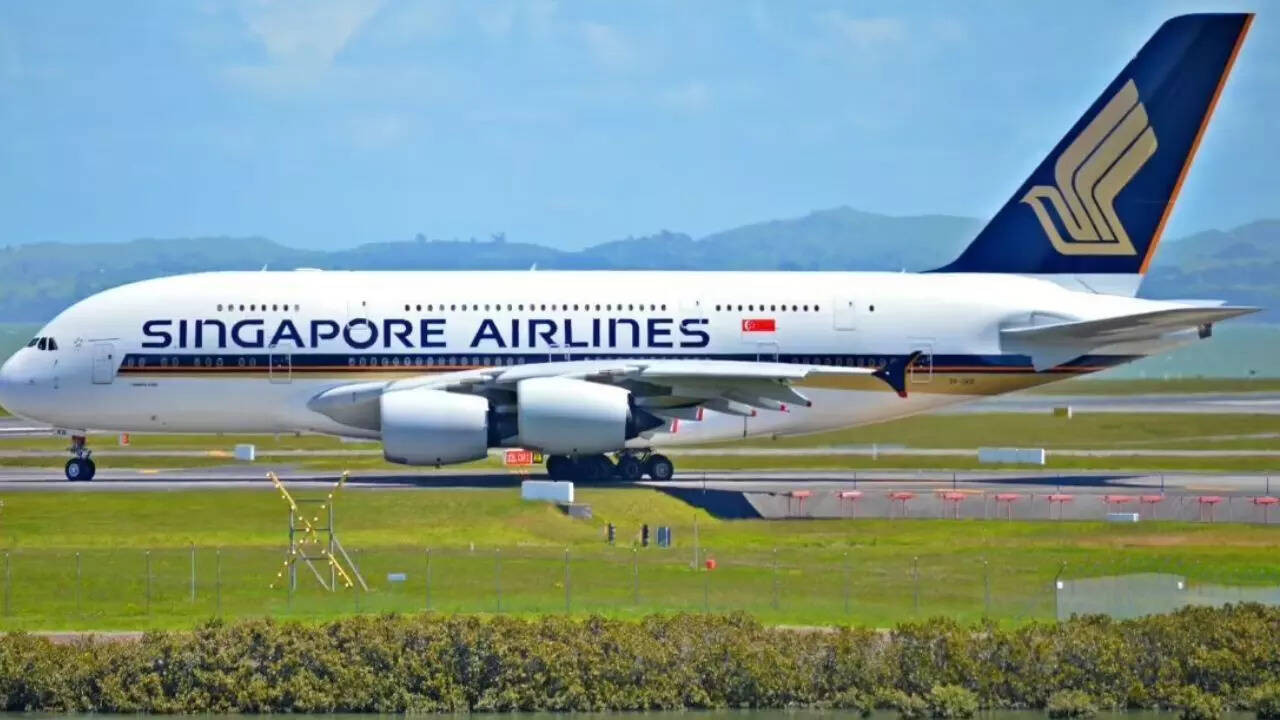Singapore Airlines (SIA) shares dipped on the Singapore Exchange following the Air India flight crash in Ahmedabad, where SIA holds a 25.1% stake. The stock fell 1.7% amidst broader market concerns, as the Straits Times Index also registered a decrease due to geopolitical tensions.
Turbulence Ahead? Singapore Airlines Navigates Air India Mishap
Okay, let’s talk about this Ahmedabad plane crash involving an Air India aircraft. The news is buzzing, and naturally, people are curious – especially given Singapore Airlines’ significant stake in the Indian carrier. But before diving deep, let’s acknowledge the obvious: everyone’s thoughts are with those affected by the incident. These situations are a stark reminder of the inherent risks involved in air travel, no matter how statistically safe it’s become.
So, what exactly happened? From what we’re hearing, it seems a tire burst during landing at Ahmedabad’s Sardar Vallabhbhai Patel International Airport. Thankfully, no serious injuries were reported, which is a huge relief. However, the incident did cause some flight delays and, predictably, a bit of a ripple effect in the financial markets.
Specifically, Singapore Airlines (SIA) saw its shares dip following the news. Now, this isn’t entirely unexpected. SIA holds a substantial 25.1% stake in Air India, a partnership forged as part of Air India’s ambitious transformation plan under the Tata Group’s ownership. When a company you’re invested in hits a bump, it’s logical to see some market reaction. Think of it like owning part of a house – if the roof leaks, you’re going to feel it in your wallet, right?
But let’s not jump to conclusions. A single tire burst, while certainly an unwelcome event, doesn’t necessarily indicate a fundamental problem with Air India’s operations. Aircraft tires, like any other component, are subject to wear and tear, and sometimes, things just go wrong. The key is how the airline responds to the incident – how quickly and efficiently they investigate, repair the damage, and implement any necessary changes to prevent similar occurrences in the future.
The Air India-SIA partnership has been viewed, at least up until now, as a potentially game-changing alliance. Tata’s reacquisition of Air India was a significant event, filled with national pride and hopes of restoring the airline to its former glory. Bringing SIA, a carrier renowned for its impeccable service and operational excellence, into the mix was seen as a masterstroke. The idea was to combine Air India’s extensive domestic network with SIA’s international prowess, creating a powerhouse airline capable of competing on a global scale.
And, in many ways, the partnership is progressing. Air India has been undergoing a visible transformation, from refreshed branding to revamped cabin interiors and, hopefully, improved customer service. It’s still early days, but the signs have been encouraging.
However, turning around a legacy airline is no easy feat. Air India has a long and complex history, burdened by years of government ownership and, frankly, mismanagement. Rebuilding its reputation and instilling a culture of efficiency and customer focus requires significant investment and a unwavering commitment from everyone involved, especially the Tata Group.
What does this incident mean for the long-term trajectory of the Air India-SIA partnership? Honestly, it’s probably too early to say. Market jitters are common after such events, and the share price dip could be a temporary knee-jerk reaction. The real test will be how Air India handles the situation and communicates with the public. Transparency and a commitment to safety are crucial in maintaining public trust.
For Singapore Airlines, this incident is a reminder of the inherent risks involved in international partnerships, particularly when dealing with companies undergoing major transformations. They’ve clearly done their due diligence before investing, but navigating the complexities of the Indian aviation market and the challenges of turning around a legacy airline requires careful management and a long-term perspective. They’re not just passive investors; they are actively involved in shaping Air India’s future.
Ultimately, the success of the Air India-SIA partnership will depend on a number of factors, including effective leadership, sound operational practices, and a relentless focus on customer satisfaction. This tire burst is just a minor setback, a speed bump on a long and potentially rewarding journey. But it serves as a timely reminder that even the best-laid plans can encounter turbulence. Let’s hope they can continue navigating it smoothly. The future of Indian aviation, in many ways, rests on their success.
📬 Stay informed — follow us for more insightful updates!







